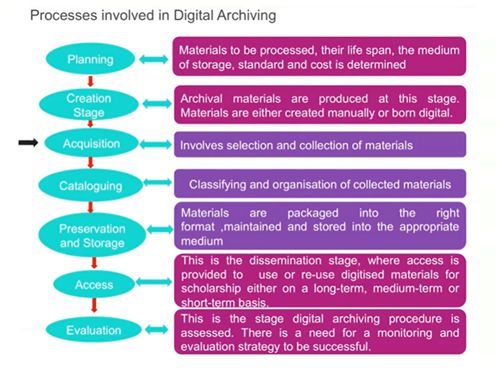Archival Preservation 101: Digitization and Digital Archiving
Rob DeLand, Head Librarian and Archivist, VanderCook College of Music
The volume of digital content available in a variety of formats has exploded in recent years as processing and storage costs have come down and demand has increased. The ability to easily make a wide range of materials available electronically has vastly increased usage over the days when a researcher might have been expected to take a trip to the repository in question to view items they desire. Digitization can also help preserve rare and fragile items by making their content available without requiring that the originals be handled. But, digitization comes with new responsibilities. These include digitization planning, format decisions, and organization of digital objects.
The first step for a robust digitization project involves planning. This includes the thoughtful consideration of questions about - what is being digitized, why, and who is the audience? Additional questions to answer in the planning process include; Who determines priorities? How will digitization be done? What equipment is needed? How will the results be accessed? Is there sufficient budget for the hardware and labor required for digitization? Is the work best done in-house or is it better to send to a vendor? Who owns the rights to the material? What is the condition of the original material, and will it require special handling?
The format chosen for a given item is also an important factor. A format should be well-documented and easily opened by the potential user’s equipment. There has been greater standardization in recent years than was the case in the early years of personal computers, when a document might only be opened on proprietary software running on a specific machine. Some formats are lossless, meaning they retain all the original data preserved in the original, while others are lossy, meaning that they’ve been compressed and discarded some of the data in the original. This is particularly important with images, especially if the user wishes to enlarge an image to view details - only to find that the image resolution is insufficient for this use.
Another important step involves organization of the digital objects once they’ve been created. Metadata may or may not exist; information will need to be made available in a catalog or finding aid so users can find it. The integrity of unique filenames and folders will need to be maintained or the item risks becoming “lost” to the potential user. Files will need to be backed up and rechecked periodically to verify that file corruption has not occurred (this is known as “fixity” and is outside the scope of this introduction (1)).

Graphic from a British Library video “Introduction to Digital Archiving” created by Oluwaseun Obasola is licensed with a CC-BY 4.0.(2)
References
- Begin learning more about fixity in this page from the Digital Preservation Coalition
- https://www.youtube.com/watch?v=X53N86nP3lk
Return to Archival Preservation 101

